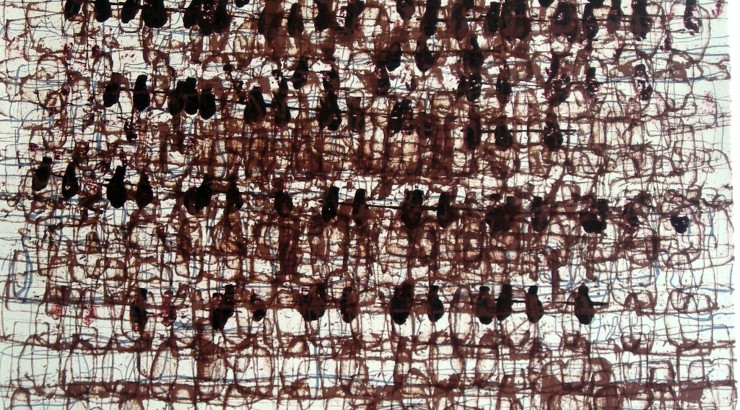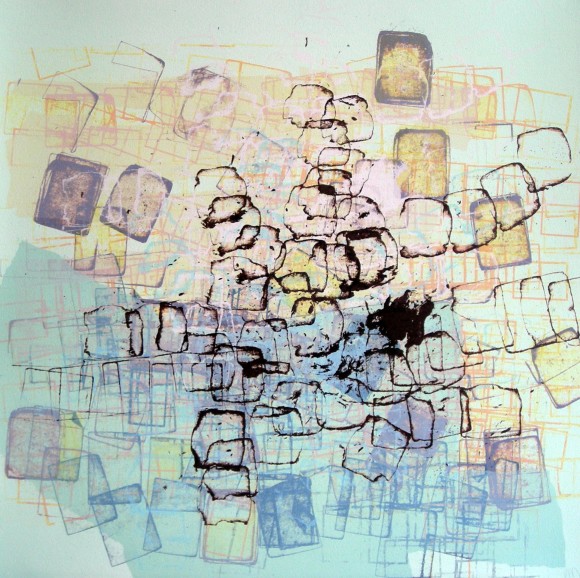Mark Bradford: Abstraction and Identity
February 10, 2016
With Black History Month upon us, many talented artists of color come to mind, including L.A. based artist Mark Bradford. We are fortunate to have a few Mark Bradford lithographs in the Escalette Collection that give us a glimpse into Bradford’s large body of work. Despite the often political angle to his art, Bradford’s work has many layers – both literally and figuratively – and usually has a deeply personal element embedded in its abstractions.
It may be hard to believe, considering the success he is experiencing today, but growing up, Bradford never considered himself to be an artist. Although he was surrounded by creative people, art as a career was considered out of the question for his working class family. Born in 1961, Bradford spent most of his childhood growing up in an all-white suburb in Santa Monica with his single mother. The rest of his youth he lived in South Central L.A., where he witnessed racial unrest and police brutality first hand. Growing up in two very different communities allowed Bradford to explore his own identity and gain a unique outlook on the world.
Bradford’s first experience with art was painting signs in his mother’s salon and making home videos. Attending CalArts for his graduate degree allowed him to develop non-traditional ways of thinking, but he did not separate himself from his life in South Central. His work actually began to take from his experiences at home, but was executed through an abstract lens.
In his early work, Bradford would often use supplies from his mother’s hair salon. As he grew as an artist, he realized he did not need to include materials that carried emotional weight in order to convey a powerful message. His primary medium today is paper. He often uses paper ads removed from plywood on the streets of L.A. He also uses colored paper, which he often wets so that the colors can bleed and be ‘freed’ from the surface. The multiple layers he uses create opacity – although the viewer can only see the top layer, they can feel the weight of the layers beneath.
Speaking about his abstract style, Bradford says:
“I’m not about forcing equivalences and I don’t need linear histories, connections, or practices. With my painting and the ideas I’ve developed around it, I’ve always just pushed forward. Abstraction gave me a space to do that, to speak out the side of my neck, to practice a form of indirect speaking”
Bradford’s work is often perceived as political, an analysis that many artists of color are used to. However, Bradford never attempts to deliver a direct political message. He seeks to pluralize ‘blackness’ by delivering nonrepresentational narratives. Bradford often speaks about the vulnerability he feels as a taller-than-average black man, and the assumptions people make. Those experiences inform his work. As a result, many of his pieces look like disjointed maps – he takes the traditional element of the grid and tangles it, creating lines that could be veins or freeways, and layering material to create a sense of history and identity.
In addition to winning multiple grants and awards throughout his career and exhibiting in museums throughout the world, Bradford is still based in South Central and frequently gives back to his community. He runs the Art + Practice Foundation in his hometown. The foundation serves as an arts center for transitional youth. It has a large exhibition space and artists in residence, as well as mentoring, tutoring, therapy, and job placement programs in place for participants. He hopes to use art education to engage the minds of young people and allow them to interpret the world they live in.
If you’re looking for more of Mark Bradford, his work is currently on view at the Broad Museum in L.A., and of course here at Chapman as well!





